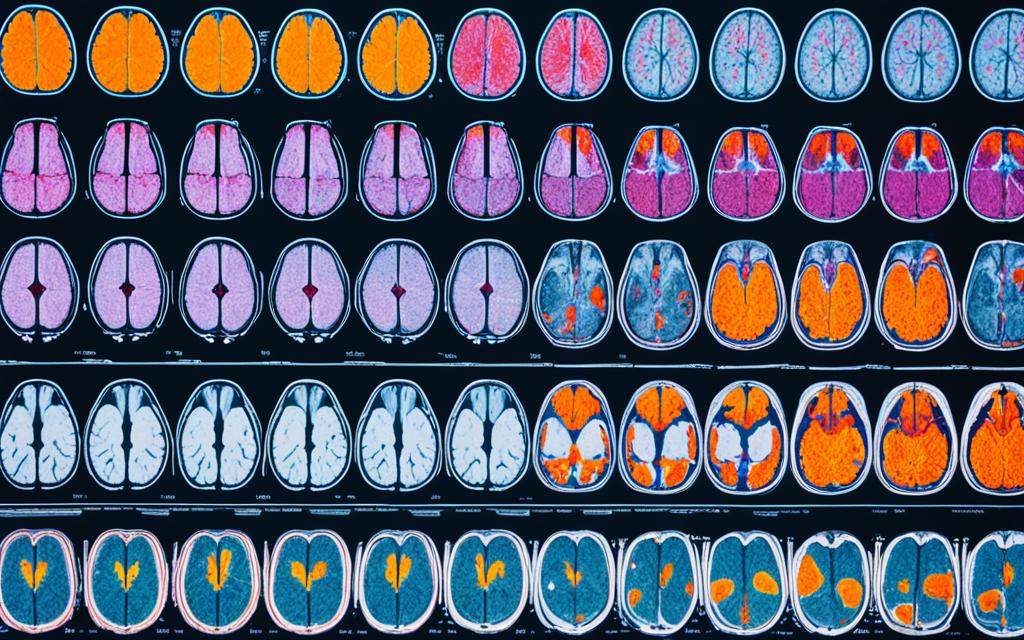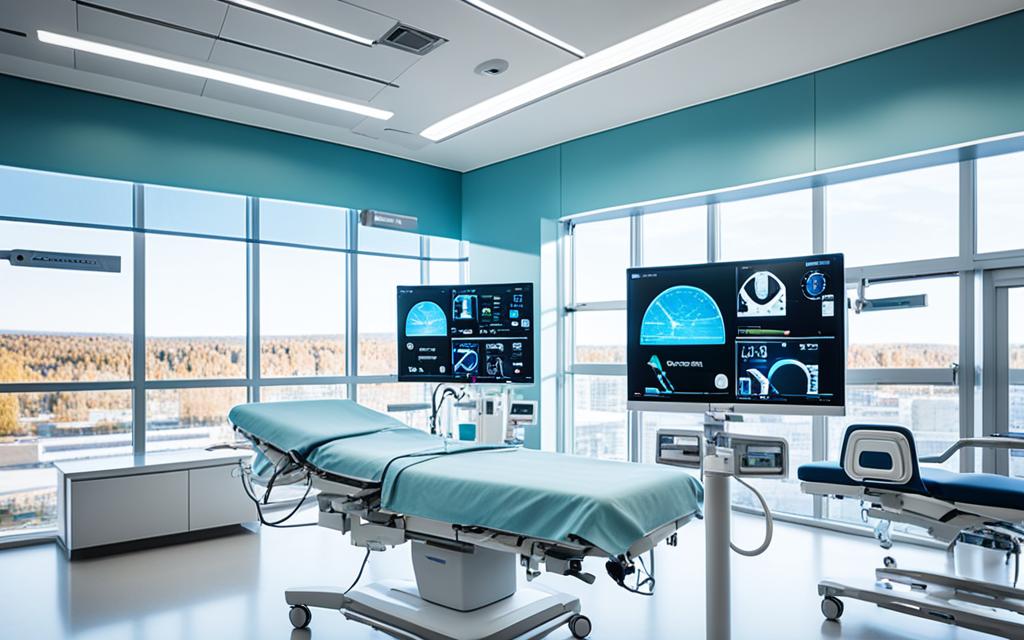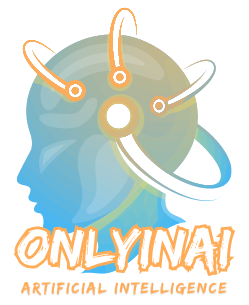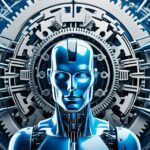Did you know AI in healthcare could save the United States up to $360 billion annually? This shows how AI is changing our healthcare systems. It’s making diagnoses more accurate and making administrative tasks easier. AI is changing patient care all over the nation.
AI in healthcare is not just a dream of the future. It’s happening now. Hospitals and clinics are using smart technologies to help patients more, make care safer, and cut costs. These AI tools are changing how we find new drugs and create treatment plans for each patient.
As we look into how AI is changing healthcare, we see its many uses. From robotic surgeries to predicting patient outcomes, AI is changing medicine. It’s an exciting time for doctors and patients, as we enter a new era of medicine that’s more efficient, accurate, and tailored to each patient.
Key Takeaways
- AI could save the US healthcare system $360 billion annually
- AI enhances diagnostic accuracy and streamlines administrative tasks
- AI applications in healthcare span from drug discovery to personalized medicine
- AI-powered tools improve patient outcomes and safety
- The integration of AI in healthcare is an ongoing process, not a future concept
Introduction to AI in Healthcare
Artificial Intelligence (AI) is changing healthcare in the United States. It’s making a big impact on how doctors diagnose, treat, and care for patients.
AI in Medical Context
In healthcare, AI means computer systems that can do tasks that need human smarts. These systems use ai medical diagnosis to look at complex medical data. This helps doctors make more precise diagnoses.
AI’s Healthcare Journey
The story of AI in healthcare started in the 1970s. Early systems like MYCIN helped diagnose blood infections. Now, AI is tackling harder tasks, from finding new drugs to making office work easier.
AI Adoption in US Healthcare
AI is becoming more popular in US healthcare fast. Experts say we’ll see more use in the next five years, and even more in ten. AI is already making healthcare better by helping patients and making things run smoother in many places.
| AI Application | Current Usage | Future Potential |
|---|---|---|
| Medical Diagnosis | Assisting doctors | Autonomous diagnosis |
| Data Analysis | Pattern recognition | Predictive healthcare |
| Administrative Tasks | Scheduling, billing | Full process automation |
As AI gets better, it will make healthcare better, help patients more, and save money in the US healthcare system.
Key AI Technologies Transforming Healthcare
AI is changing healthcare in big ways. It’s making everything from diagnosis to treatment better. Let’s look at the main AI technologies leading this change.
Machine learning is a big part of the change. It looks at lots of patient data to predict treatment results and tailor care plans. Hospitals use it to guess how many patients will come in and plan staff better.
Deep learning is a part of machine learning that’s great at recognizing images. In radiology, it spots cancer early and accurately. This helps doctors plan better treatments.
Natural language processing (NLP) is changing how doctors write notes. It reads through notes, finds important info, and even helps write reports. This lets doctors spend more time on patient care.
- Machine learning for precision medicine
- Deep learning in radiology
- NLP for clinical documentation
Rule-based expert systems work alongside these AI tools. They use set rules to help make quick decisions in medical situations. These are super helpful in emergency rooms, where fast action is key.
Together, these AI technologies are making healthcare better. They’re making diagnoses more accurate and making things run smoother. AI is truly changing healthcare in the U.S.
How Does AI Change Our Healthcare Systems
AI is changing healthcare in the U.S. It makes diagnoses more accurate and helps with paperwork. Let’s see how AI is changing medical care.
Enhancing Diagnostic Accuracy
AI tools are making diagnoses better. They look at medical images with great detail. This helps find problems that humans might miss.
This is especially useful in radiology and pathology. Catching problems early can save lives.
Streamlining Administrative Processes
AI is making paperwork tasks easier. It does billing, coding, and scheduling faster and with fewer mistakes. This lets doctors focus on patients, not paperwork.
| Task | Traditional Method | AI-Assisted Method | Improvement |
|---|---|---|---|
| Medical Coding | Manual review | Automated analysis | 60% faster |
| Appointment Scheduling | Phone calls | AI chatbots | 24/7 availability |
| Billing Errors | 5-10% error rate | <1% error rate | 90% reduction |
Improving Patient Engagement and Care
AI is making care more personal. It looks at patient data to suggest the best treatments. Virtual assistants help patients 24/7, answering questions and checking health signs.
This makes patients more involved in their care. It leads to better health results.
Seeing how AI changes healthcare, we see a future that’s more efficient, precise, and focused on patients. AI in healthcare is more than a new tool. It’s changing the way we see medicine.
AI-Powered Diagnostic Tools and Imaging

The healthcare world is changing fast, thanks to ai healthcare applications. These tools are making it easier to spot diseases. Deep learning algorithms are now a big part of medical imaging, making diagnoses more accurate and helping patients get better faster.
AI tools look at X-rays, MRIs, and CT scans with amazing precision. They can spot cancer in images as well as or better than doctors. This means catching diseases early, which can lead to better treatment plans.
Here are some key benefits of AI in diagnostics:
- Enhanced early disease detection
- Improved diagnostic accuracy
- Faster analysis of medical images
- Reduced workload for radiologists
- Better treatment outcomes for patients
As AI gets better, we’ll see even more advanced tools. These tools will change how healthcare works, making diagnoses more precise and treatments more focused.
“AI in medical imaging is not just about replacing human expertise; it’s about augmenting it. We’re entering an era where AI and human intelligence work together to provide the best possible care for patients.”
Using AI in medical diagnosis is a big step forward for healthcare tech. As these tools spread, they could improve care all over the world.
AI in Drug Discovery and Development
AI is changing the way we find and develop new medicines. It uses machine learning and big data to speed up the process. This is making healthcare innovation faster and more efficient.
Accelerating Research Processes
AI drug discovery tools look through huge amounts of data to find potential new medicines quickly. They can check millions of compounds much faster than humans. This makes the early stages of making new drugs much quicker.
Predicting Drug Efficacy and Side Effects
AI is great at guessing how drugs will work with the human body. This helps researchers:
- Forecast potential side effects
- Estimate drug efficacy
- Reduce the time and cost of clinical trials
By simulating how drugs interact, AI can pick the best candidates for more testing.
Personalized Medicine Advancements
AI is pushing forward personalized medicine. It looks at each patient’s unique data to create treatments that fit their genetic makeup. This leads to better treatments and fewer side effects.
| AI Application | Impact on Drug Discovery |
|---|---|
| Virtual Screening | 10x faster compound identification |
| Predictive Modeling | 30% reduction in failed drug trials |
| Personalized Treatment | 20% increase in treatment efficacy |
As AI gets better, its role in finding and developing new medicines will expand. This promises a future with more efficient, effective, and tailored medical treatments.
AI-Driven Patient Monitoring and Care Management

AI patient monitoring is changing healthcare by giving us real-time data analysis. Wearable devices and sensors track vital signs. This helps spot health problems early. It’s great for managing long-term illnesses and stopping unnecessary hospital visits.
Machine learning algorithms look through lots of health data. They find patterns and predict future issues. This lets doctors make quick, smart choices. It leads to treatments that are more tailored to each patient.
“AI-driven monitoring systems have reduced our hospital readmission rates by 30% in the past year,” says Dr. Sarah Thompson, Chief of Medicine at Lincoln Memorial Hospital.
Remote patient monitoring, thanks to AI, lets doctors keep an eye on patients from anywhere. It’s super helpful for older patients or those in rural areas far from hospitals.
- Continuous monitoring of vital signs
- Early detection of health issues
- Personalized treatment plans
- Reduced hospital readmissions
As AI gets better, we’ll see even more advanced patient monitoring tools. These new tools will likely make patients’ health outcomes better, cut healthcare costs, and raise the quality of care in the U.S.
Robotic Process Automation in Healthcare Administration
Robotic Process Automation (RPA) is changing healthcare administration. This technology makes routine tasks more efficient and saves money.
Streamlining Billing and Coding
RPA makes billing and coding easier. AI systems look at medical records fast, pick the right codes, and send in claims. This means fewer mistakes and quicker payments, helping healthcare providers.
Enhancing Appointment Scheduling
AI helps schedule appointments better. It looks at patient info, doctor times, and what’s available. This makes schedules that cut down on waiting and use resources well.
Improving Inventory Management
RPA changes how healthcare handles supplies. AI tracks what’s in stock, guesses what’s needed next, and orders automatically. This means hospitals always have what they need without too much extra.
| RPA Application | Benefits |
|---|---|
| Billing and Coding | Faster reimbursements, fewer errors |
| Appointment Scheduling | Reduced wait times, optimized resource use |
| Inventory Management | Prevent stockouts, reduce waste |
RPA is making a big difference in healthcare. It gives staff more time, cuts down on mistakes, and makes patients happier. As these AI tools get better, we’ll see even more efficiency in healthcare places all over the U.S.
AI in Precision Medicine and Personalized Treatment
Precision medicine is changing healthcare, and AI leads this change. AI looks at huge amounts of patient data, like genes, to make treatments fit each person’s needs.
Machine learning algorithms can guess how patients will react to treatments. This change in ai medical treatment lets doctors make plans that work best for each patient, with fewer side effects.
In oncology, AI makes a big difference. Advanced algorithms look at each tumor to pick the best cancer treatments. This focused approach often means better results and a better life for patients.
“AI-driven precision medicine is not just improving treatment efficacy; it’s giving hope to patients who previously had limited options.”
AI’s effect on treatment isn’t just in cancer care. It helps doctors make treatments for rare genetic disorders and common chronic conditions. AI looks at each patient’s genes, lifestyle, and environment to make the best plan.
| Area of Impact | AI Application | Patient Benefit |
|---|---|---|
| Oncology | Tumor analysis for targeted therapy | Improved survival rates |
| Pharmacogenomics | Drug response prediction | Reduced adverse reactions |
| Rare Diseases | Genetic variant interpretation | Faster diagnosis and treatment |
| Chronic Conditions | Lifestyle and environmental analysis | More effective management plans |
As AI gets better, its role in precision medicine will expand. The future of healthcare is in these tailored approaches. This means more effective treatments and better outcomes for patients everywhere.
Ethical Considerations and Data Privacy in AI Healthcare
As ai healthcare data analysis grows, ethical concerns rise. Patient data protection is crucial. New tech like federated learning helps multi-institutional research without sharing sensitive info. This keeps patient privacy intact while advancing medical knowledge.
Addressing Bias in AI Algorithms
AI medical diagnosis tools must be fair. Bias in algorithms can lead to care disparities. Developers need diverse datasets to train AI systems. Regular audits help catch and fix biases before they impact patient care.
Human Oversight in AI-Assisted Decisions
Balancing AI and human judgment is key. Doctors should review AI recommendations. This ensures empathy in care decisions. It also catches rare cases AI might miss. Human oversight keeps healthcare personal and accurate.
“AI in healthcare promises great advances, but we must never lose sight of the human element in medicine.”
Ethical AI use in healthcare requires ongoing vigilance. As tech evolves, so must our approach to these issues. By addressing ethics head-on, we can harness AI’s power while protecting patients’ rights and well-being.
Challenges in Implementing AI in US Healthcare Systems
Adding AI to US healthcare faces big challenges. One big issue is fitting new AI with the old healthcare setup. This can take a lot of time and require big updates to technology.
Training healthcare workers is another big challenge. They need to learn how to use AI tools, which can be hard for some. This might slow down the use of AI in healthcare.
Following rules is also hard. AI systems must meet strict healthcare standards. This adds more complexity.
There’s worry about AI replacing human jobs. While AI can make things more efficient, it might take jobs away. Finding a balance between AI and human skills is key. It’s also important to make sure AI decisions are safe and trustworthy for patients.
The digital divide is a big challenge too. Making sure everyone has access to AI healthcare is crucial. This means fixing issues with technology and healthcare resources in different communities. Overcoming these issues is important for AI to fully help US healthcare.


